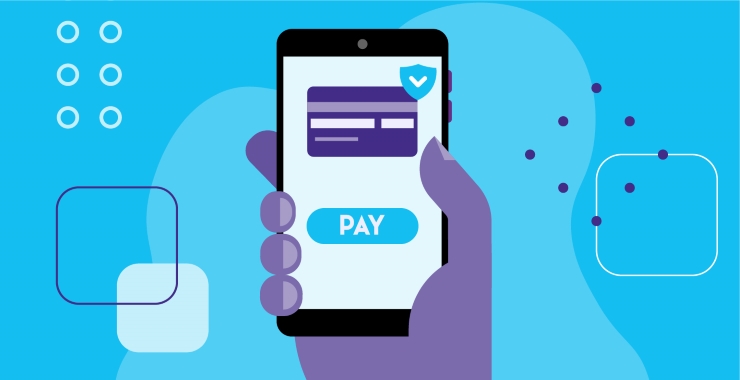Undertaking a home renovation project can be an exciting and rewarding endeavor. Whether you’re planning to update your kitchen, remodel your bathroom ,or add an extension to your home, one of the key considerations is how to finance your renovation. While there are several options available, using a personal loan can be attractive solution for many house owners.
Personal Loan:
A Personal loan is a type of unsecured loan that provides you with lump sum of money that can be used for various purposes, including home renovations. Unlike specific home improvement loans or lines of credit, a personal loan gives you the flexibility to use the funds as you see fit. This means you can allocate the money towards purchasing materials, hiring contractors, or covering any other expenses related to your renovation project.
Using a Personal loan to fund home renovations can have both pros and cons. Let’s explore them in more detail:
Pros:
Flexibility:
Personal loans provide you with the flexibility to utilize the funds as per your requirement. Unlike specific home improvement loans that may have restrictions on how the money can be spent, a personal loan gives you the freedom to allocate the funds as needed for your renovation project.
Ease of access:
Personal loans are relatively easy to obtain, especially if you have good credit score. Many financial institutions and online lenders offer personal loans with streamlined application process, quick approval process and funds disbursed directly into your account. This accessibility can be beneficial when you’re ready to start your renovation project promptly.
Competitive interest rates:
Personal loans often come with competitive interest rates, particularly for borrowers with good credit. Compared to other types of loans or credit options, such as credit cards, personal loans may offer lower interest rates, which can help you save money over the long term.
Fixed repayment terms:
Personal loans typically come with fixed repayment terms, meaning you’ll have a set monthly payment and a specific repayment period. This predictability allows you to budget and plan your finances accordingly, making it easier to manage the loan repayment alongside your other expenses.
Cons:
Unsecured loan:
Personal loans do not require collateral as they are unsecured. Since the lender takes on more risk, they may charge higher interest rates compared to loans secured by an asset, such as a home equity loan or line of credit.
Potential impact on credit:
Obtaining a personal loan and accruing more debt may have an impact on your credit rating. When you apply for a loan, the lender will likely conduct a hard credit inquiry, which can temporarily lower your credit score. Additionally, if you’re unable to make timely repayments or miss payments, it can further negatively impact your creditworthiness.
Loan limits:
Personal loans typically have a borrowing limit based on your creditworthiness, income, and other factors. Depending on the scope of your home renovation project, the loan amount may not cover all the expenses, especially if it’s a significant undertaking. In such cases, you may need to explore alternative financing options or supplement the personal loan with other sources of funding.
Interest costs:
While personal loans can offer competitive interest rates, the overall interest costs can add up over time. It’s essential to carefully review and compare the interest rates, repayment terms, and any associated fees before committing to a personal loan, ensuring that the cost of borrowing aligns with your budget and financial goals.
Before deciding to use a personal loan to fund your home renovations, it’s advisable to evaluate your financial situation, research various loan options, and consider alternative financing methods. Assessing the pros and cons will help you make an informed decision that suits your specific needs and long-term financial well-being.
To get the best home improvement loan rates, consider the following steps:
Check your credit score:
Lenders typically offer better rates to borrowers with good credit scores. Before applying for a home improvement loan, review your credit report and address any errors or issues that could be affecting your score. Aim for a higher credit score to increase your chances of qualifying for lower interest rates.
Shop around and compare lenders:
Research different lenders, including banks, credit unions, and online lenders, to find competitive rates and terms. Look for lenders that specifically offer home improvement loans or personal loans for home renovations. Compare interest rates, fees, repayment terms, and customer reviews to identify the best options.
Improve your debt-to-income ratio:
Lenders assess your debt-to-income ratio (DTI) to determine your ability to repay the loan. Lowering your DTI by paying down existing debts or increasing your income can improve your chances of securing better loan rates.
Provide collateral if possible:
Some lenders may offer lower rates if you provide collateral, such as home equity, to secure the loan. Secured home improvement loans can provide access to more favorable rates, but remember that you are putting your property at risk if you default on the loan.
Consider loan terms:
Shorter loan terms typically come with lower interest rates. While longer loan terms may reduce your monthly payments, they can result in higher overall interest costs. Assess your financial situation and choose a loan term that balances affordability and minimizing interest expenses.
To get a home improvement loan, you can follow these steps:
Determine your renovation needs: Identify the scope of your home improvement project and calculate the estimated cost. This will help you determine the loan amount you need to borrow.
Research lenders:
Explore different lenders, such as banks, credit unions, online lenders, and specialized home improvement loan providers. Compare their interest rates, fees, repayment terms, eligibility criteria, and customer reviews.
Check your credit score:
Request a copy of your credit report and review it for accuracy. A higher credit score generally improves your chances of getting approved for a loan and securing better terms. If needed, take steps to improve your credit score before applying.
Gather necessary documents:
Lenders typically require certain documents for loan applications. These may include proof of income, bank statements, identification documents, and details about your home improvement project. Prepare these documents in advance to streamline the application process.
Get pre-qualified or pre-approved:
Some lenders offer pre-qualification or pre-approval processes. These steps involve providing basic information about your financial situation to the lender, who will then assess your eligibility and provide an estimate of the loan amount and terms you may qualify for. This can help you understand your borrowing capacity and narrow down your options.
Accept the loan offer:
If you’re satisfied with the loan offer, accept it according to the lender’s instructions. Read the loan agreement carefully, ensuring that you understand the terms and conditions before signing it.
Use the funds for your home improvements:
Once the loan is approved and accepted, the funds will be disbursed to your designated bank account. Use the funds to carry out your planned home improvements according to your budget and project timeline.
Remember to evaluate your repayment capacity, including monthly payments, interest costs, and the impact on your overall financial situation. Carefully consider the terms and conditions of the loan before proceeding, and be mindful of any associated fees or penalties.
Conclusion:
Taking a personal loan for home renovations can be a viable option for homeowners looking to finance their renovation projects. The flexibility, accessibility, and competitive interest rates offered by personal loans make them an attractive choice. By using a personal loan, you can allocate funds as needed, quickly access the required funds, and benefit from potentially lower interest rates compared to other forms of unsecured borrowing.



